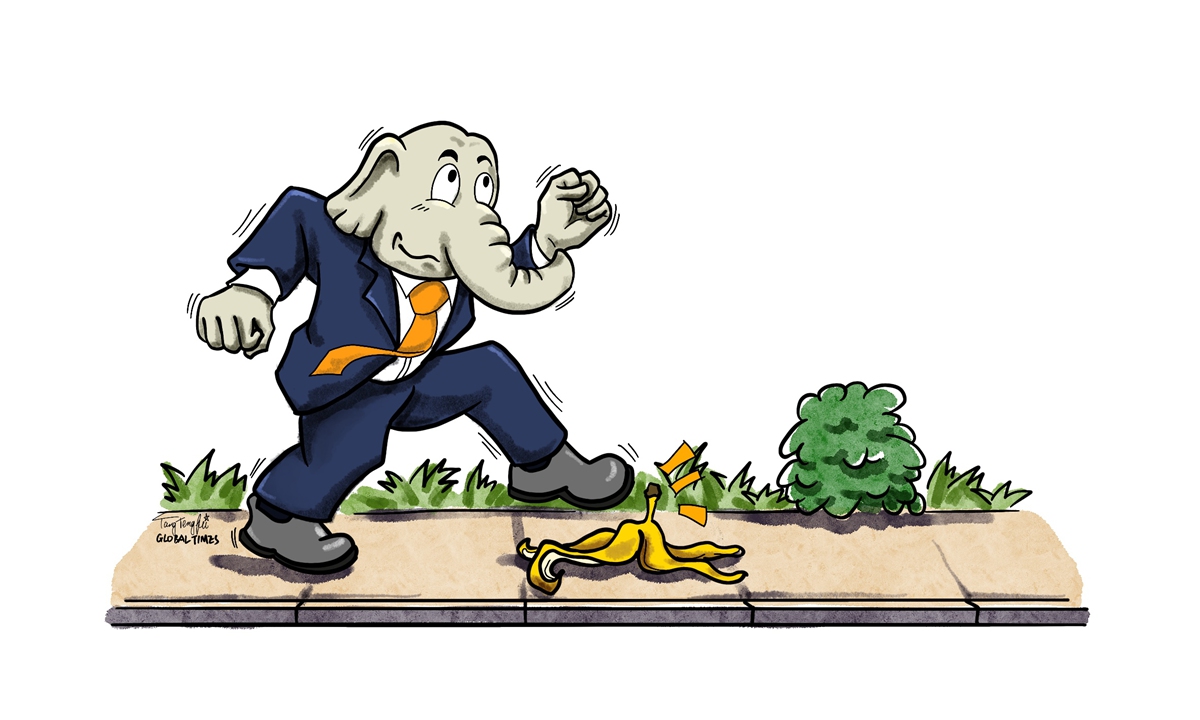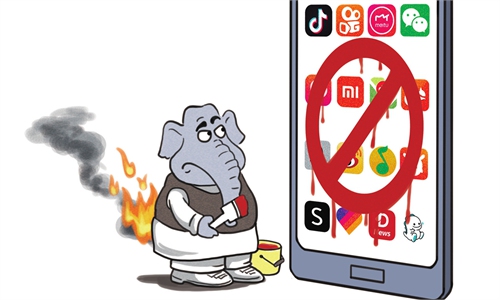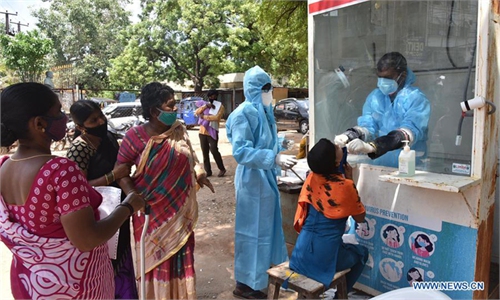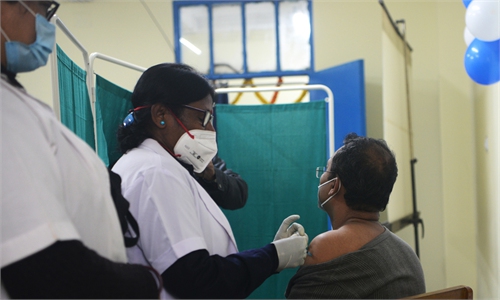COMMENTS / EXPERT ASSESSMENT
K-shaped recovery in India will drive the poor to the wall

Illustration: Tang Tengfei/GT
While the hard-hit Indian economy continues to struggle in 2021, discussion surrounding a K-shaped "recovery path" has been raised as the country's wealthy elite is recovering faster than the rest, giving rise to a wider wealth gap which will be risky for the country's development.Following a drastic economic plunge of 23.9 percent in April-June quarter and 7.5 percent drop in July-September quarter in 2020, the populous South Asian country, with over 10 million COVID-19 cases, has begun to show some green roots of recovery. Per a recent IMF forecast, the Indian economy is expected to grow at 11.5 percent this year, 2.7 percentage points higher than its previous forecast in last October.
Alongside the recovery, the underlying issue of a K-shaped recovery pattern has been highlighted as the rich get richer and the poor get poorer. The Indian economy, for starters, lacks the necessary foundation to cultivate a broader recovery or realize common wealth growth due to the country's specific historical and cultural backgrounds, such as the caste system. Even without the pandemic, India's society remains a seriously polarized one, with tens and millions poor people struggling to make ends meet.
Not to mention that the current economic recovery is reliant on the central bank's pouring money into the market to push up economic growth, like drinking poison to quench thirst. Money will eventually flow to the pockets of the rich, and the inflation caused by the excessive liquidity is even more painful to low-income groups in India.
A recent large-scale protest held by farmers on its Republic Day revealed the intensifying social conflict in the country. Low-income groups, including farmers, are bearing the brunt of the economic fallout of the COVID-19 pandemic.
Besides the ongoing crisis of protests, conflicts will continue to tear its society apart and foster bitter opposition, which may further extend the effect into conflicts between parties or even cause uncontrollable turmoil.
The social "chasm" in India is not just a "gap between the rich and the poor," but the existence of multiple gaps and conflicting factors. Typical examples include the caste system, religious opposition, stratum dividing, and ethnic strife. Under such circumstances, if the wealth gap keeps growing and the social conflicts become more intense, 100,000 farmers driving tractors into New Delhi may just be the beginning.
On the other hand, although the K-shaped recovery is not unique to India, it may bring in much bitter result to the South Asian country than to others. The US economy has also been regarded as running the risk of a K-shaped recovery with the rich seeing their wealth rapidly expanding and the low-income groups queuing before food tanks on the street.
However, the two countries have extremely different economic and social patterns. The US, as the world's economic superpower, has currency hegemony and comparative advantages in political, economic and military systems, which can support the US to keep the poor above surviving threshold.
While India's low-income groups may not be as "lucky" as those in the US when it comes to this crisis. The emerging economy, though with an improving recovery pace, is still one of the victims to bear the fallout of the US' excessive quantitative easing, and India's own cash printer will only put its residents deeper in the quagmire. In the end, it will only further intensify the discontent and resentment amongst the broader population.
The author is director of the Institute of Bay of Bengal Studies at Shenzhen University. bizopinion@globaltimes.com.cn



